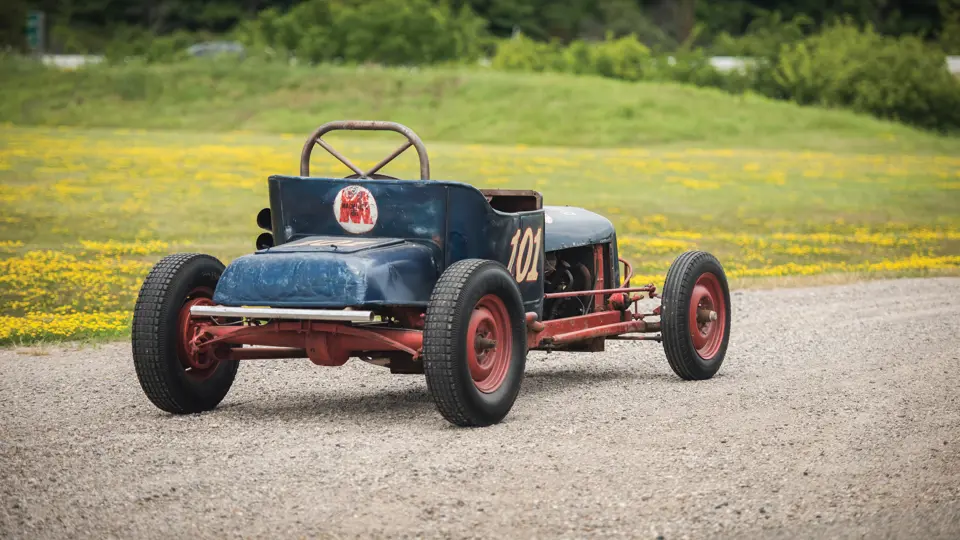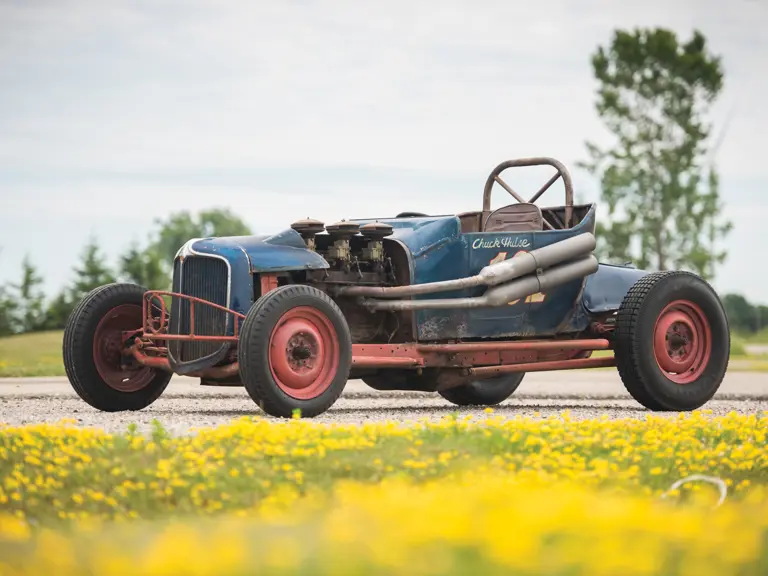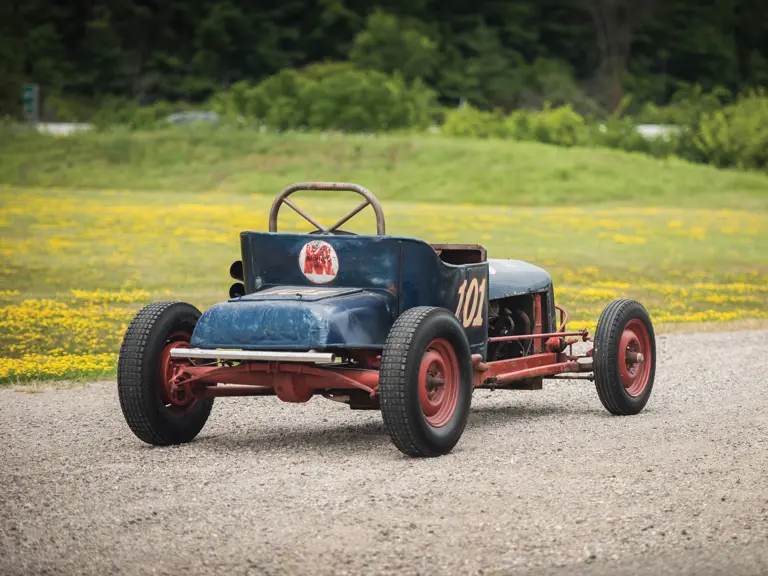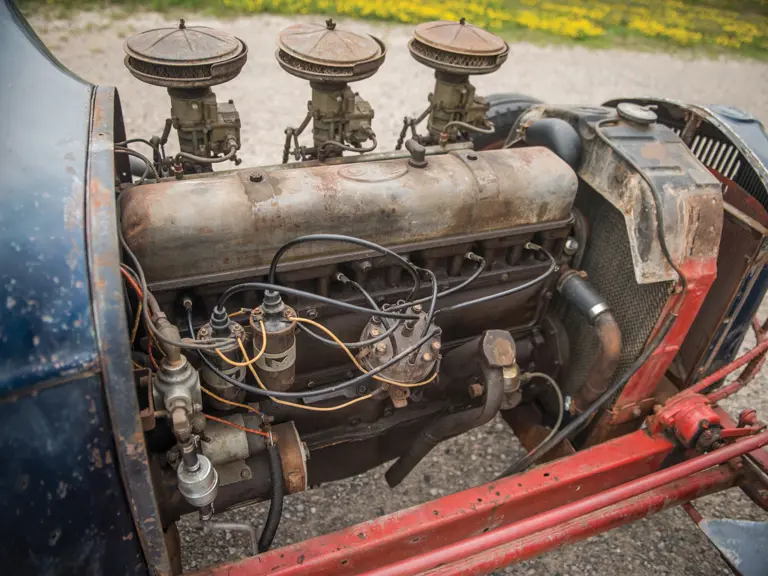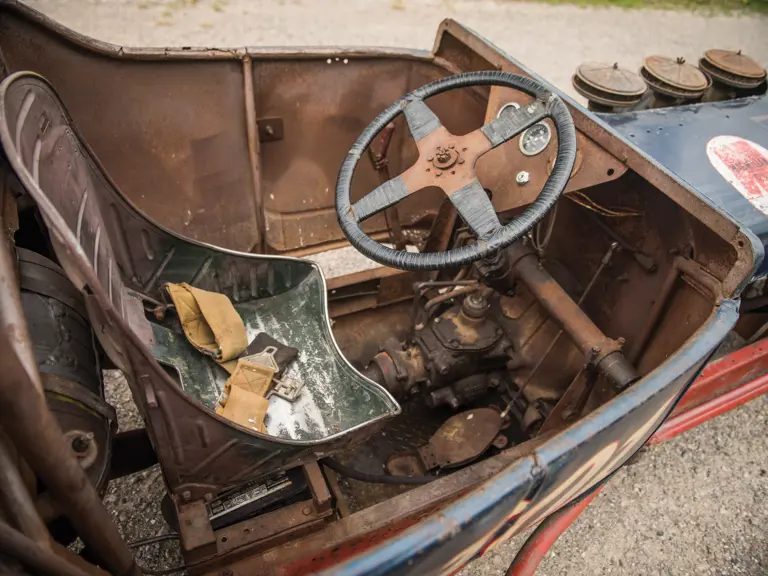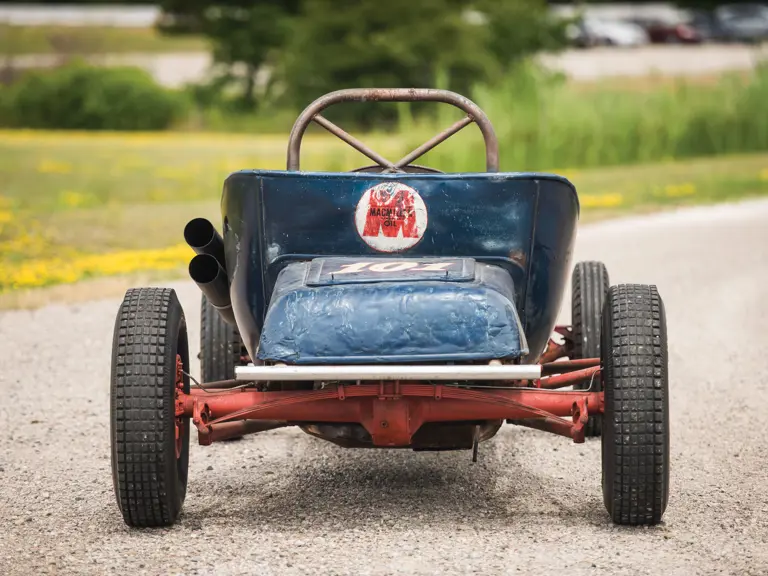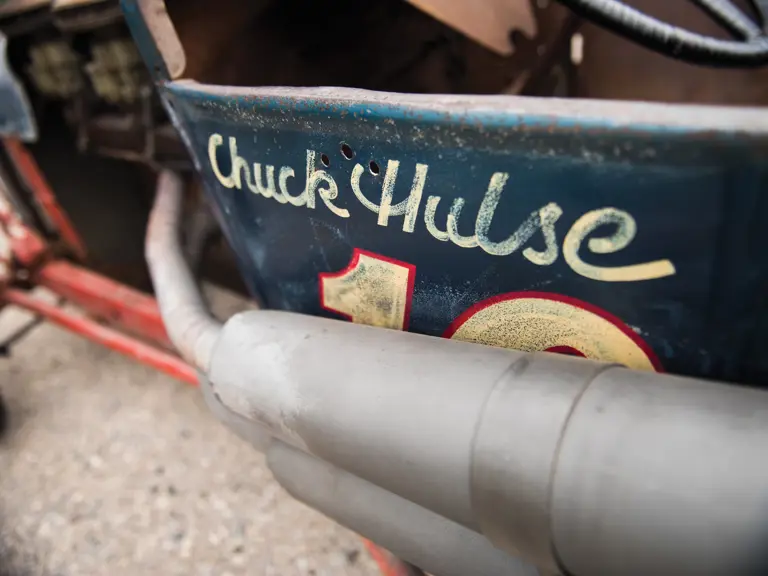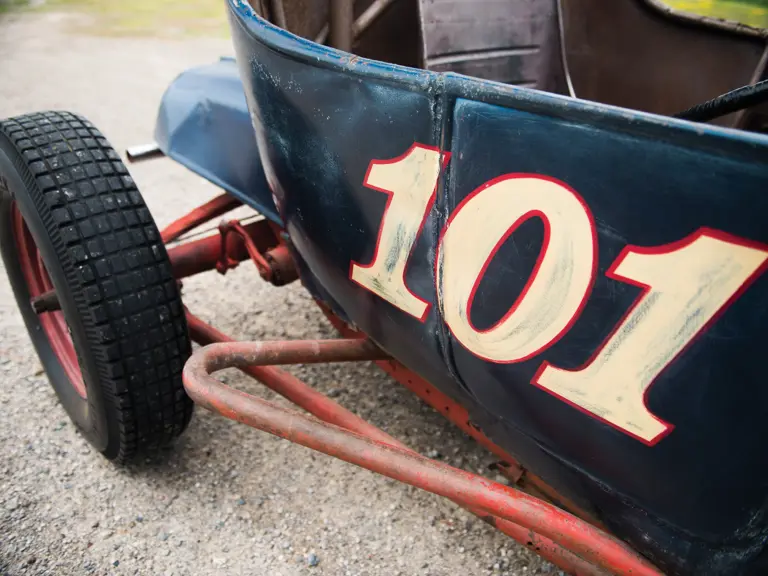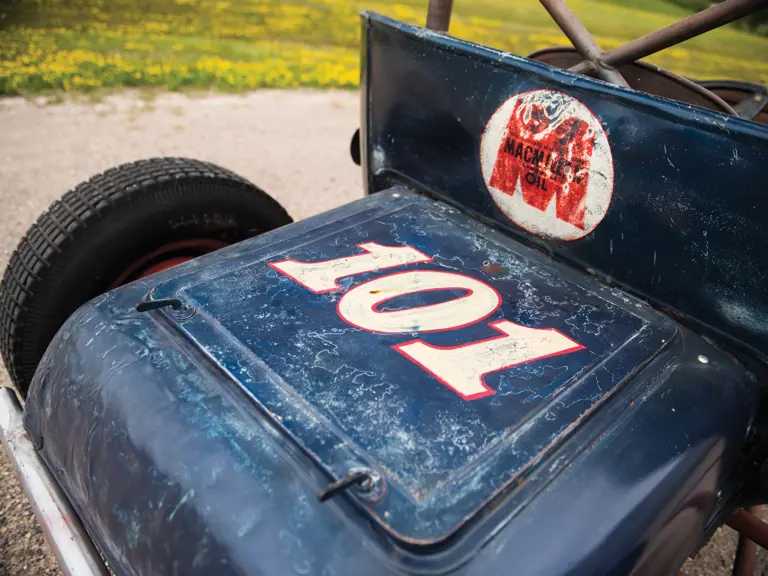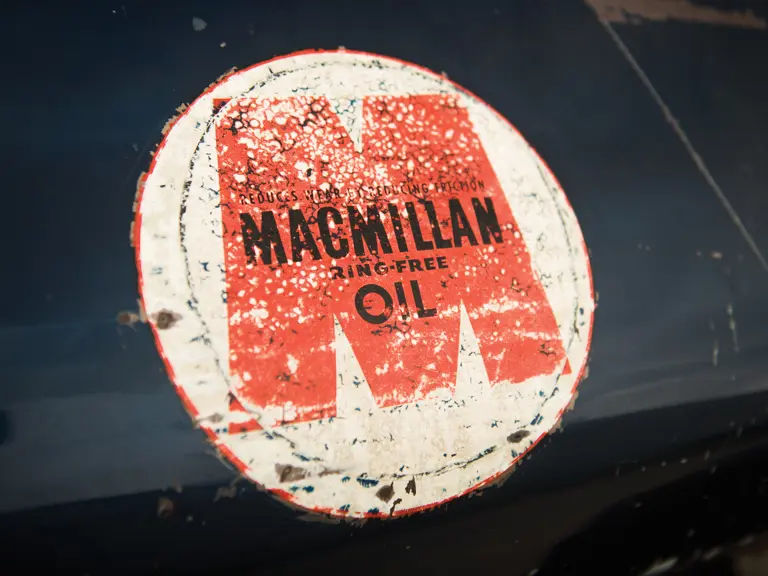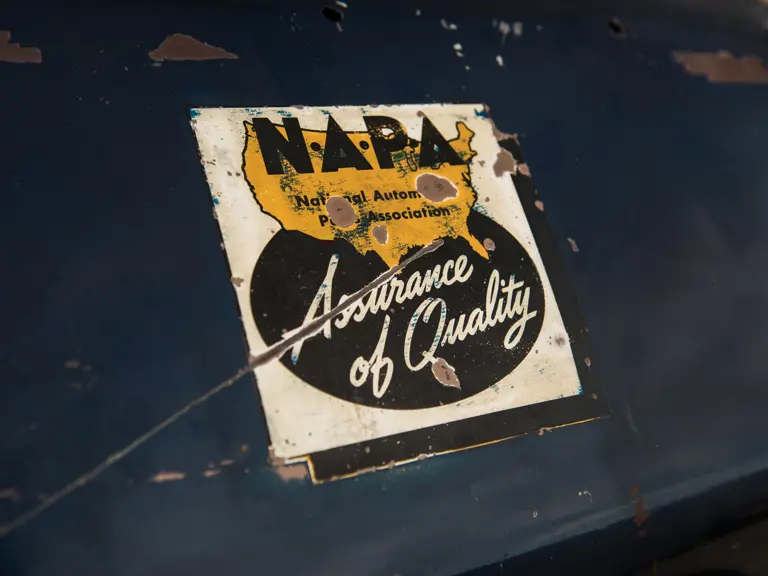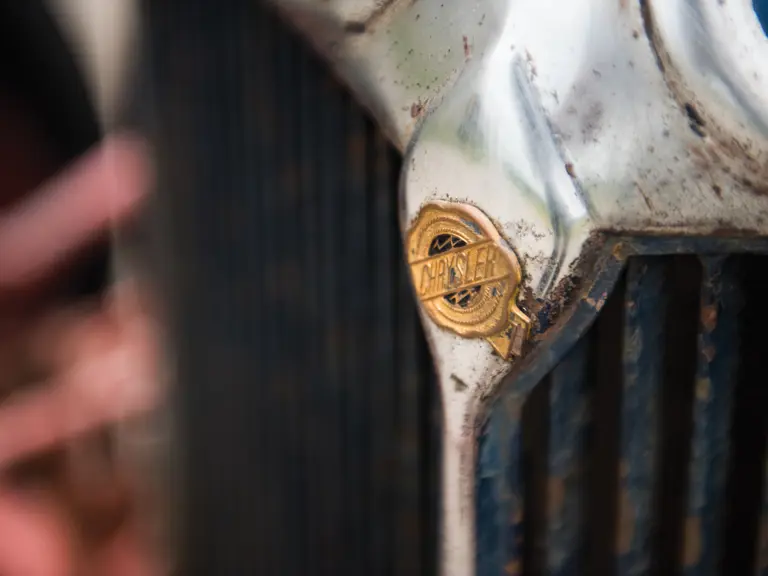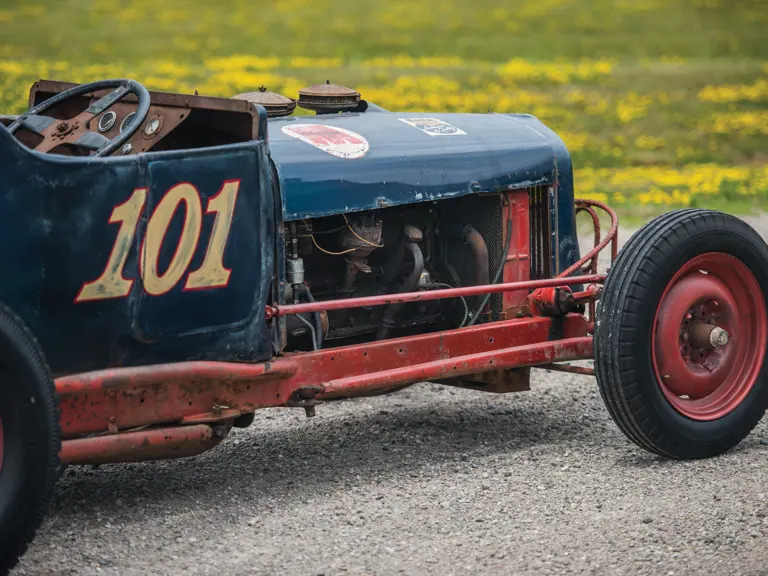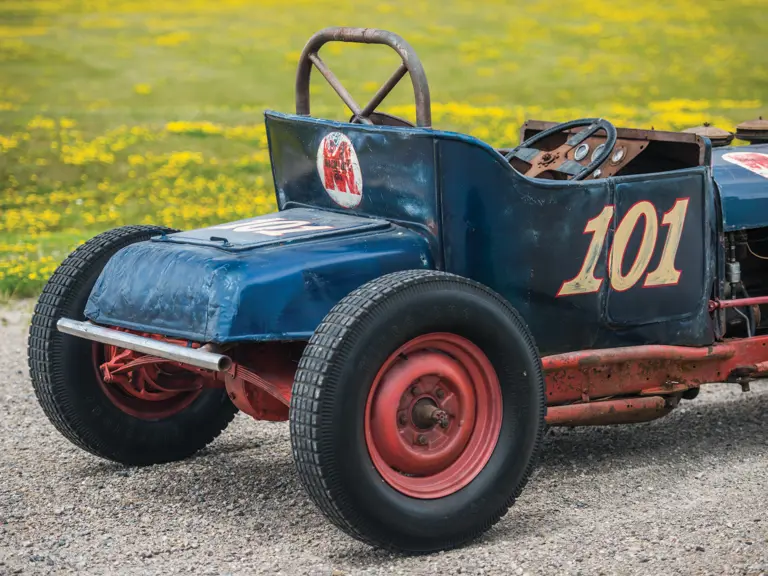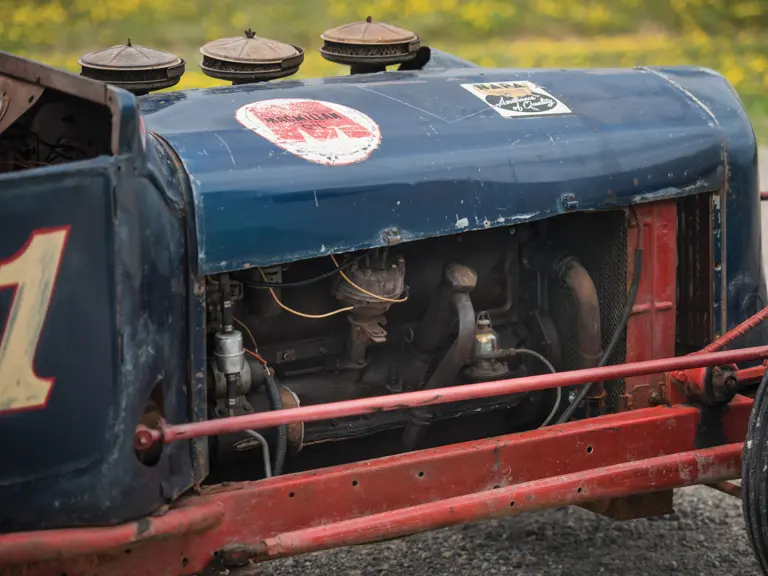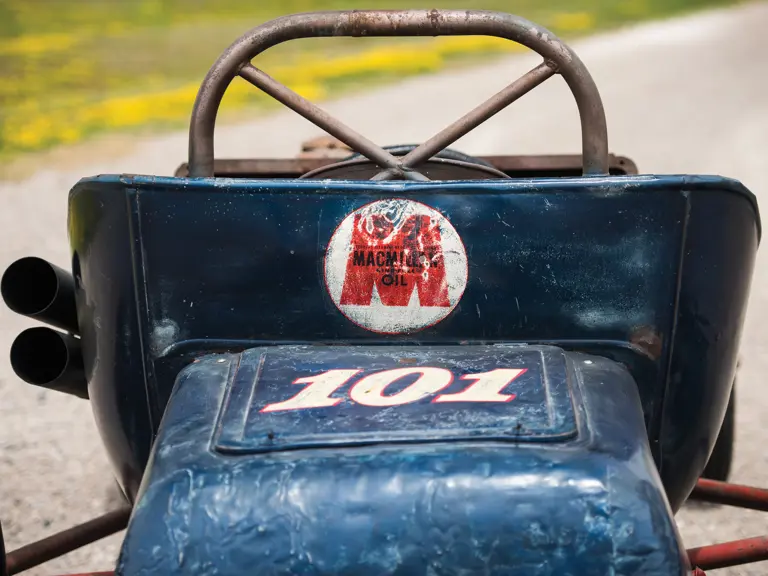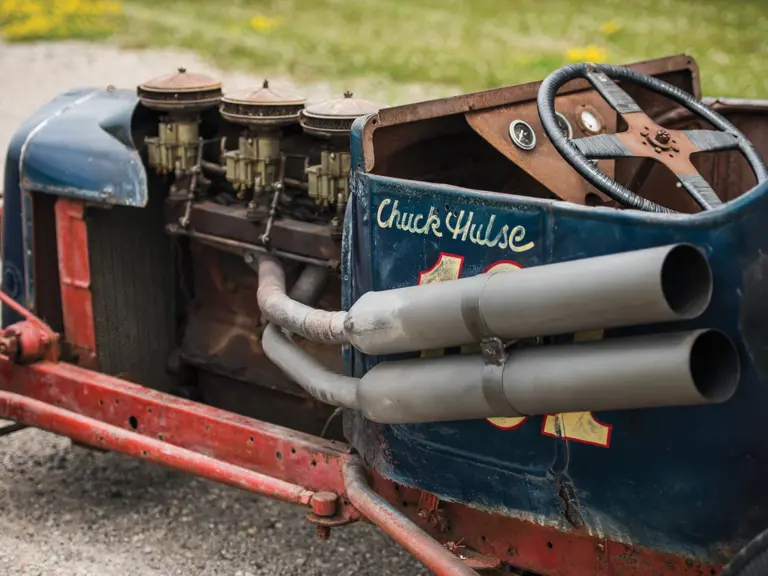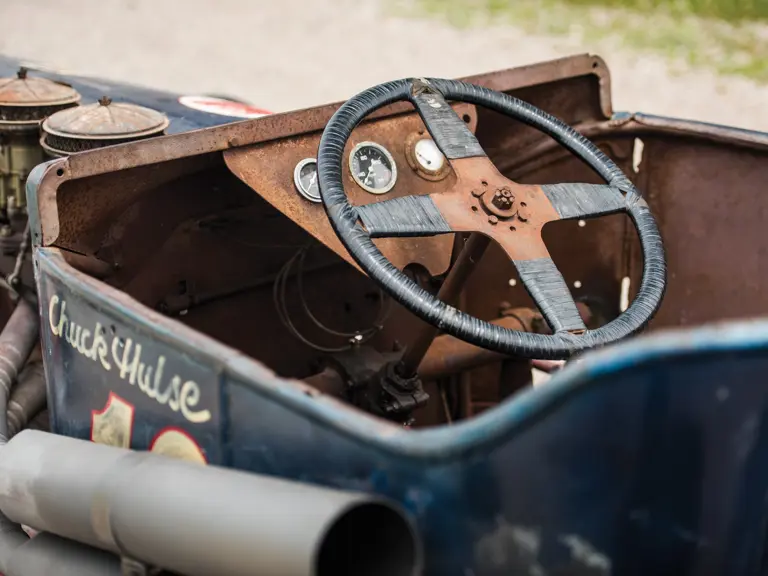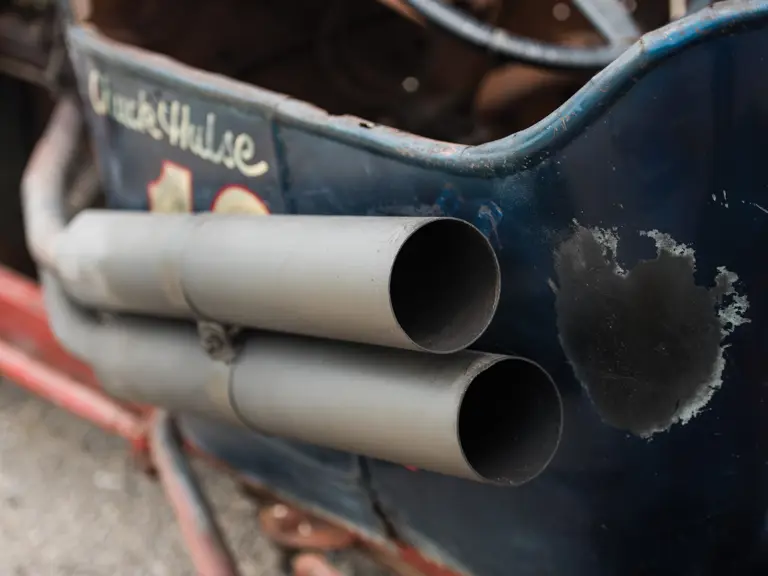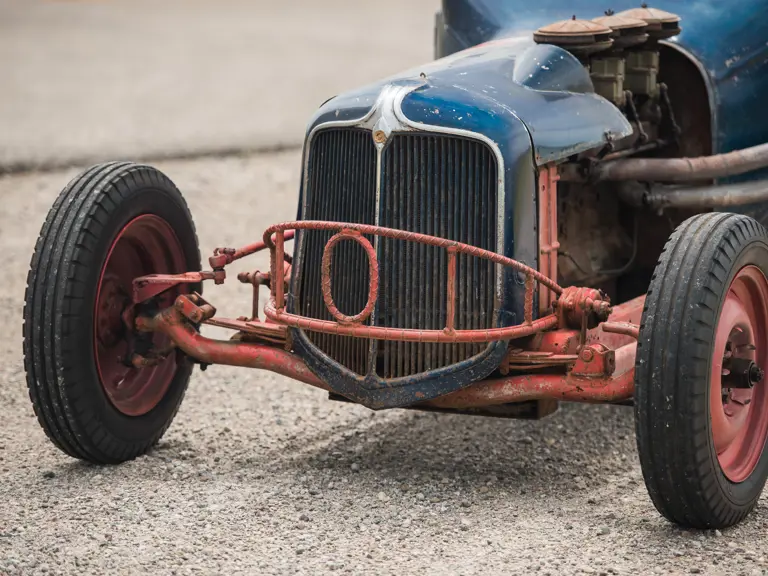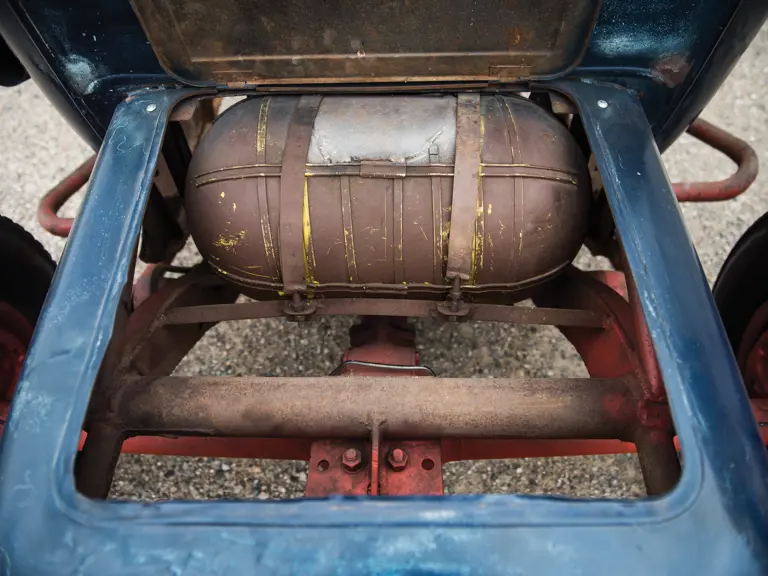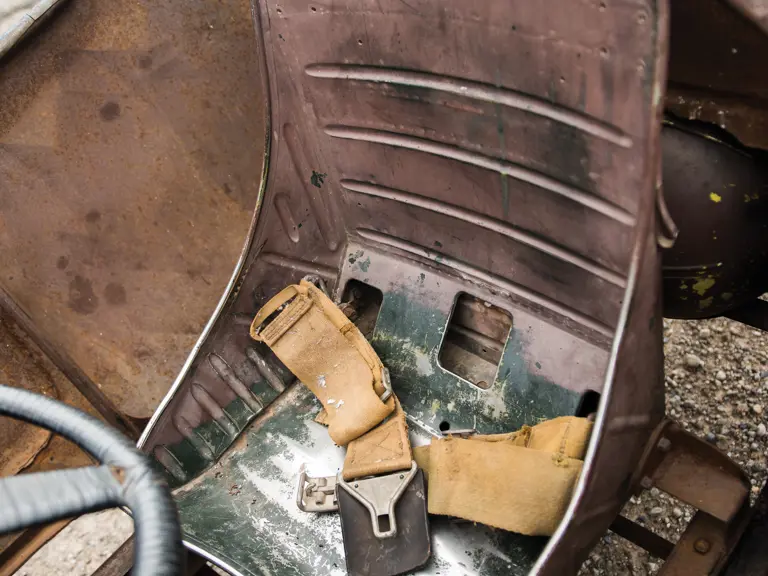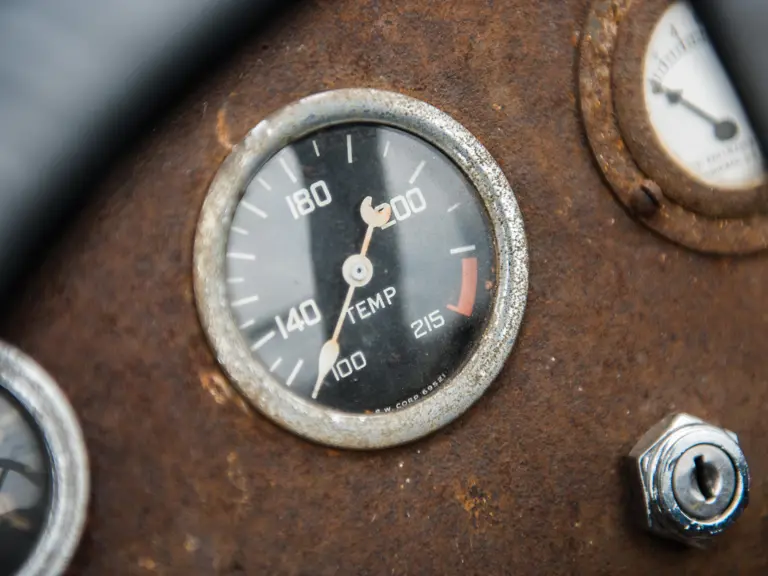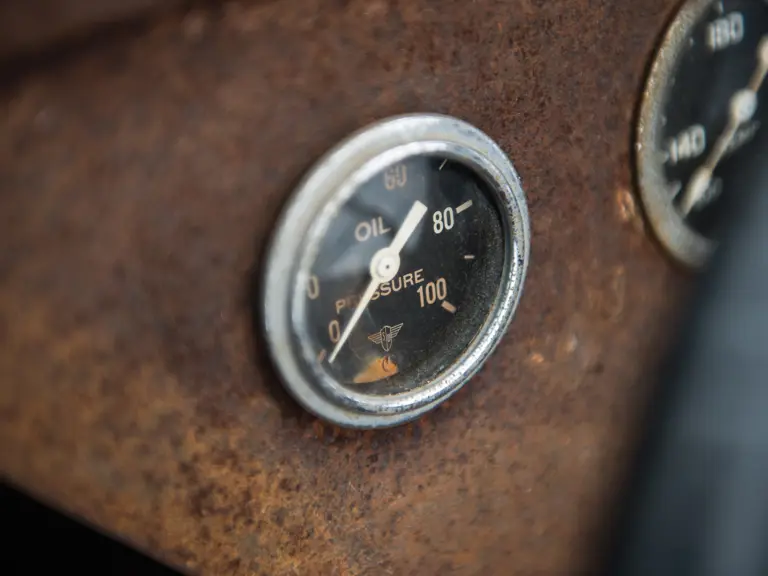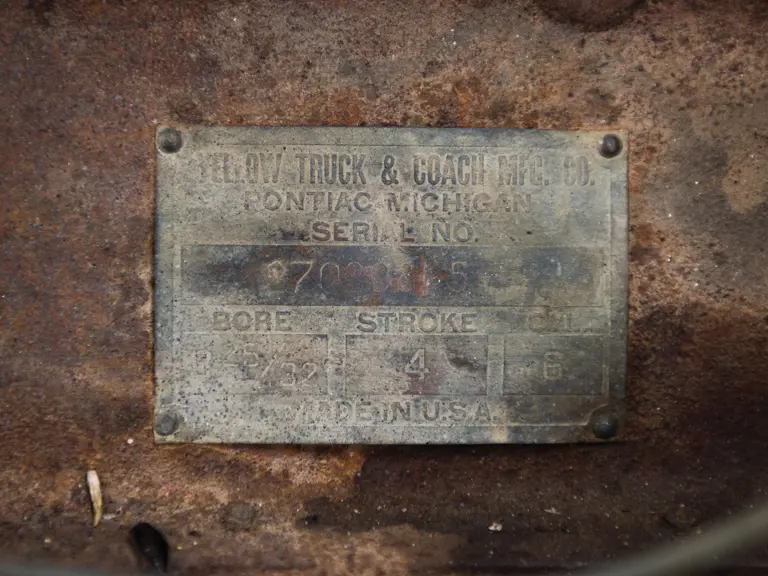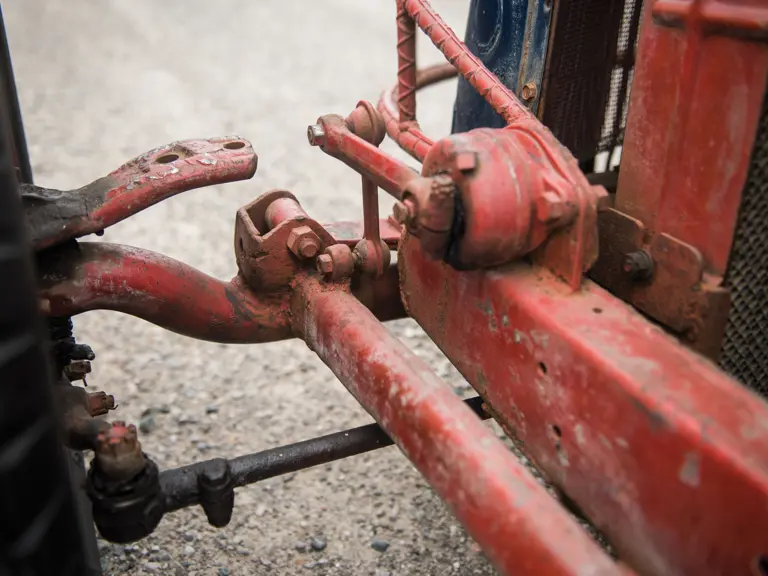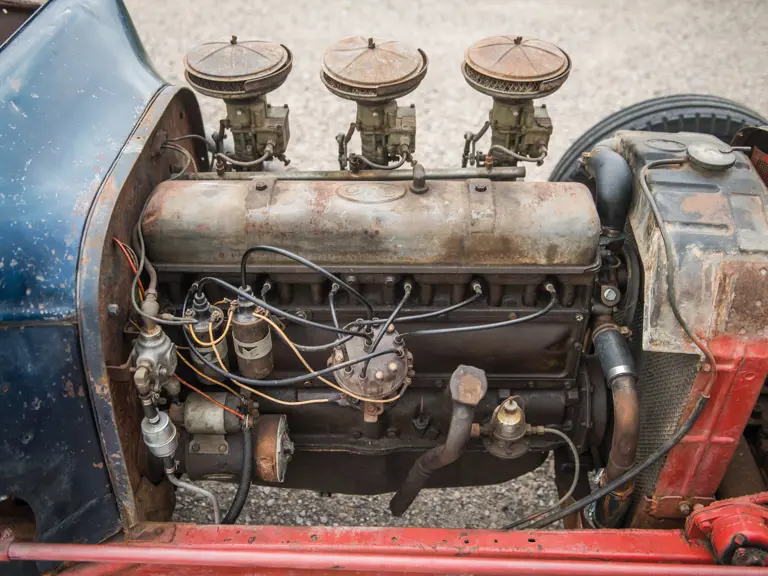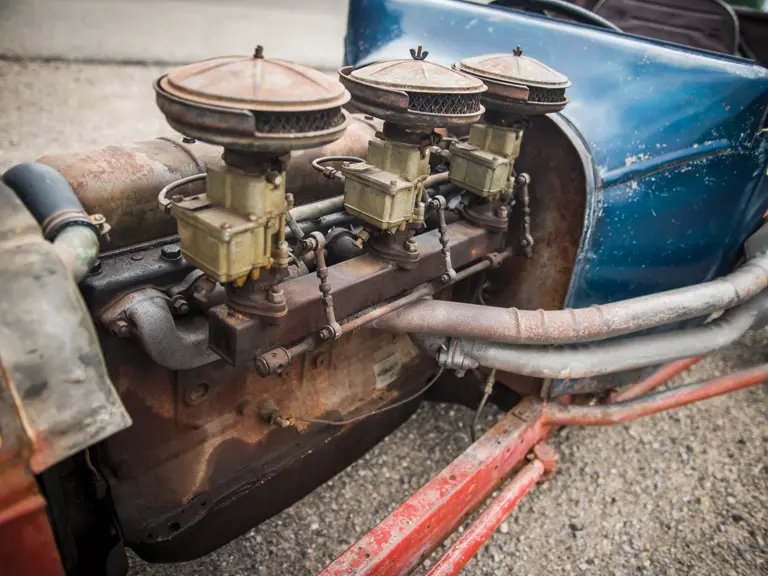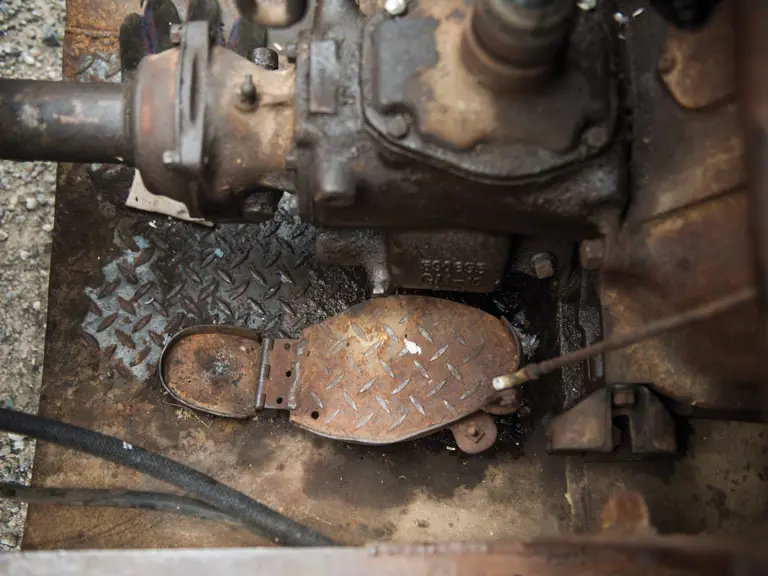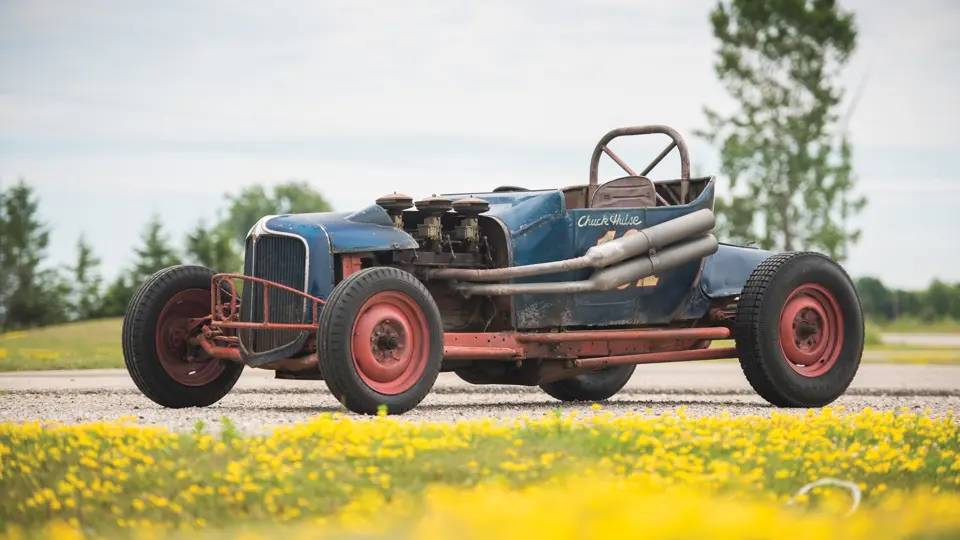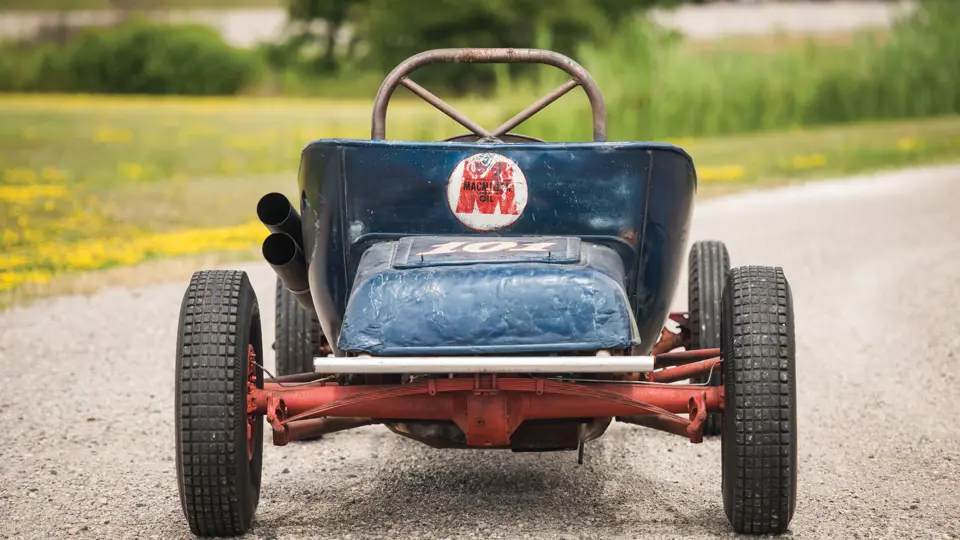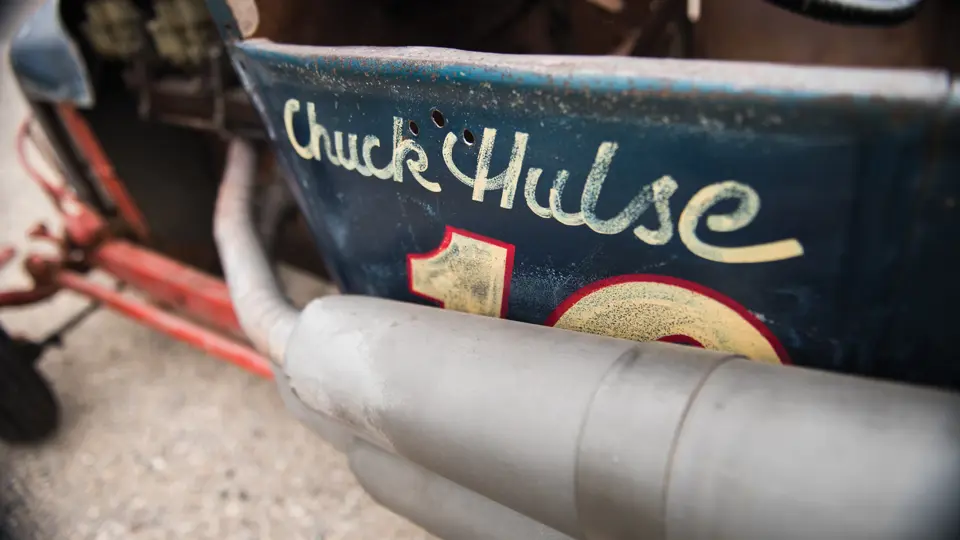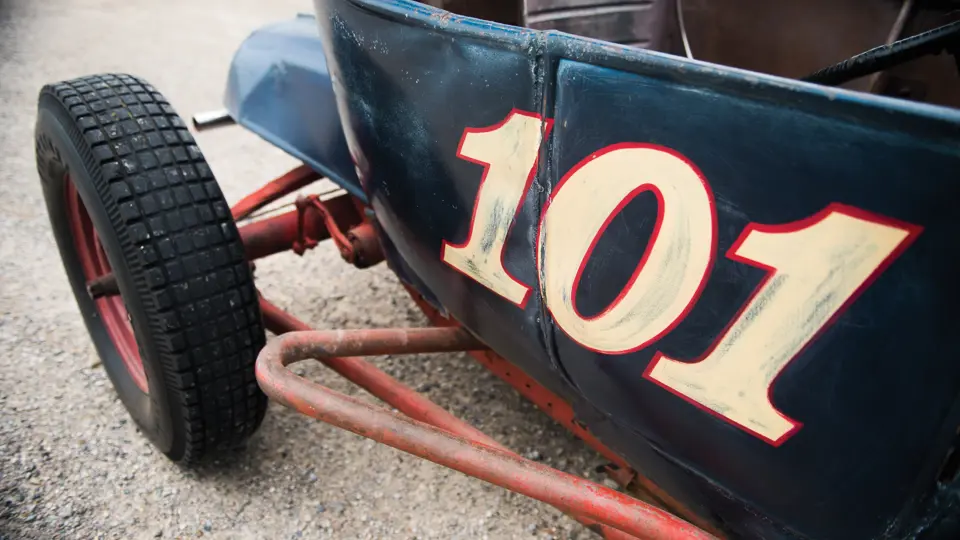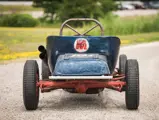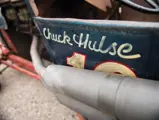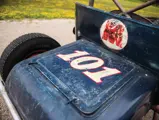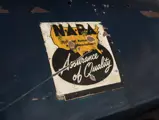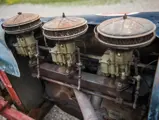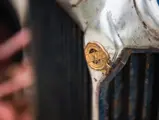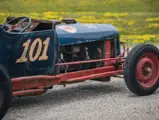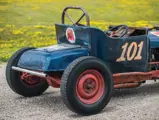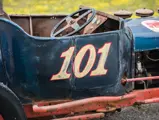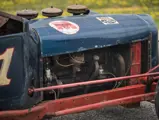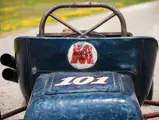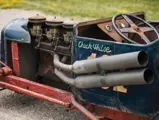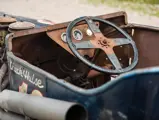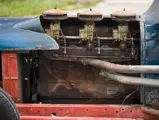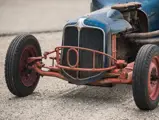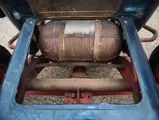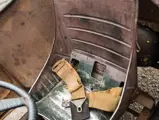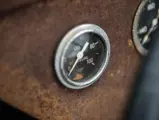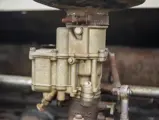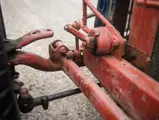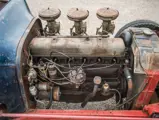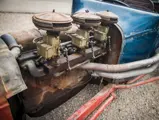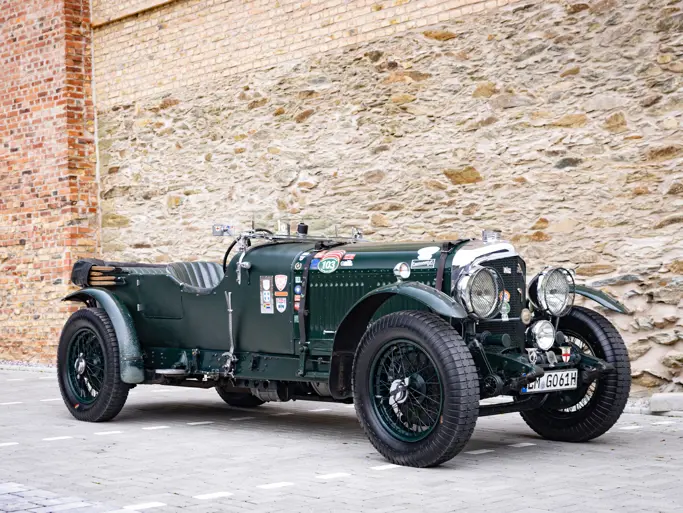 | Monterey, California
| Monterey, California
270 cu. in. GMC L-head inline six-cylinder engine with three-carburetor intake and custom dual racing exhaust, three-speed Chevrolet manual transmission running second and third gears, solid front axle with transverse leaf spring suspension, live rear axle with transverse leaf spring suspension, and rear-wheel drum brakes. Wheelbase: 100 in.
Dirt track roadsters based on Ford Model T and Model A bodies and chassis date back to the 1930s, but they reached a zenith in California after the war. Many late ’50s/early ’60s Indy pilots like Rathman, Vukovich, Bettenhausen, and Hulse honed their race craft on dusty quarter-mile ovals in these dangerous devices. Short on money and lacking new parts, the original builders of these track roadsters instead relied on ingenuity and fabrication skills.
Tommy Garland of Buellton, California, built this unique example. The body shell was scrounged from a circa 1922 Ford Model T with the rear turtle deck and lid provided by a 1914 Model T. The heavy-duty steering wheel is actually a discarded and cut-down circular saw blade! The grille shell is a sectioned 1932 Chrysler unit. Other innovations include the pressurized fuel system and a fabricated rollbar, while a retired bomber provided the alloy driver’s seat and seat belts. A skilled welder, Garland built the triple manifold for the “Jimmy” engine and the special dual racing exhaust system. Sig Erson provided a custom-ground camshaft, as well as a distributor from a 12-cylinder Cadillac, adapted to cope with the higher rpms of the motor.
The “Track T” was completed in 1948 and campaigned for about six years at Porterville, Bakersfield, Lompoc, Old Ascot, and the Thunderbowl. Future Indy car driver Chuck Hulsey apparently took the wheel for a few races when its usual pilot, Lee Hammock, was running his Kurtis Midget car.
Beginning in the mid-1950s, the car was stored for some 30 years atop Tommy Garland’s grease rack before local Buellton racer “Slick” Gaines talked Garland into a sale. Gaines had coveted this car since his high school days and displayed it in a local museum after his acquisition.
Following the end of their racing careers, the vast majority of track roadsters were discarded or sacrificed their engines and running gear to other racing cars, and as a result, only a handful remain original and intact. The offering of this fascinating example presents a unique opportunity to enjoy and preserve an American racing icon.
